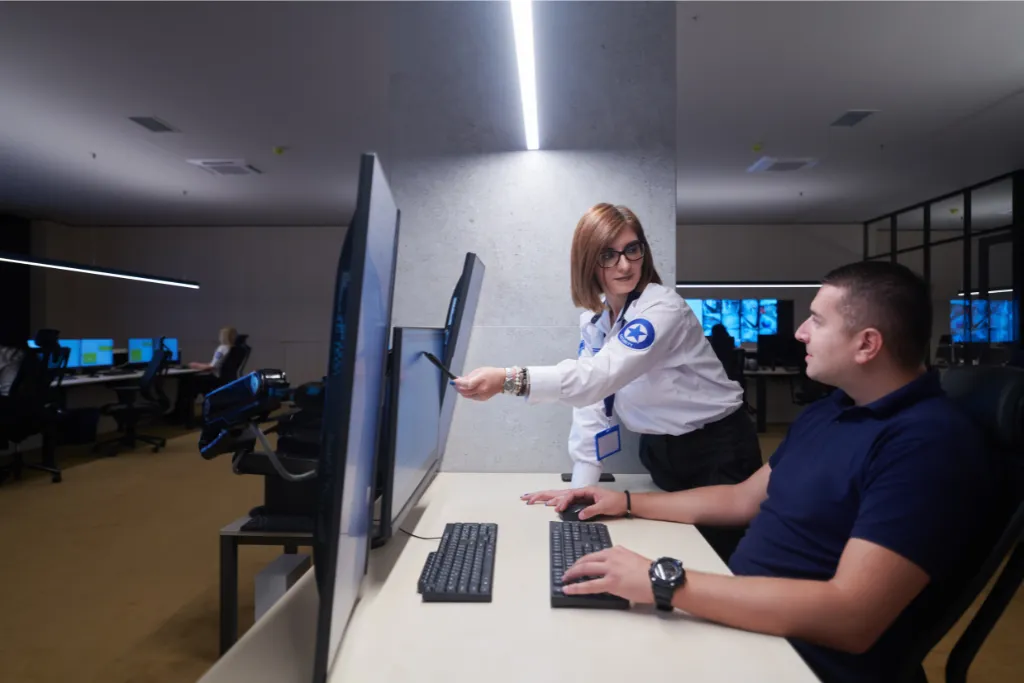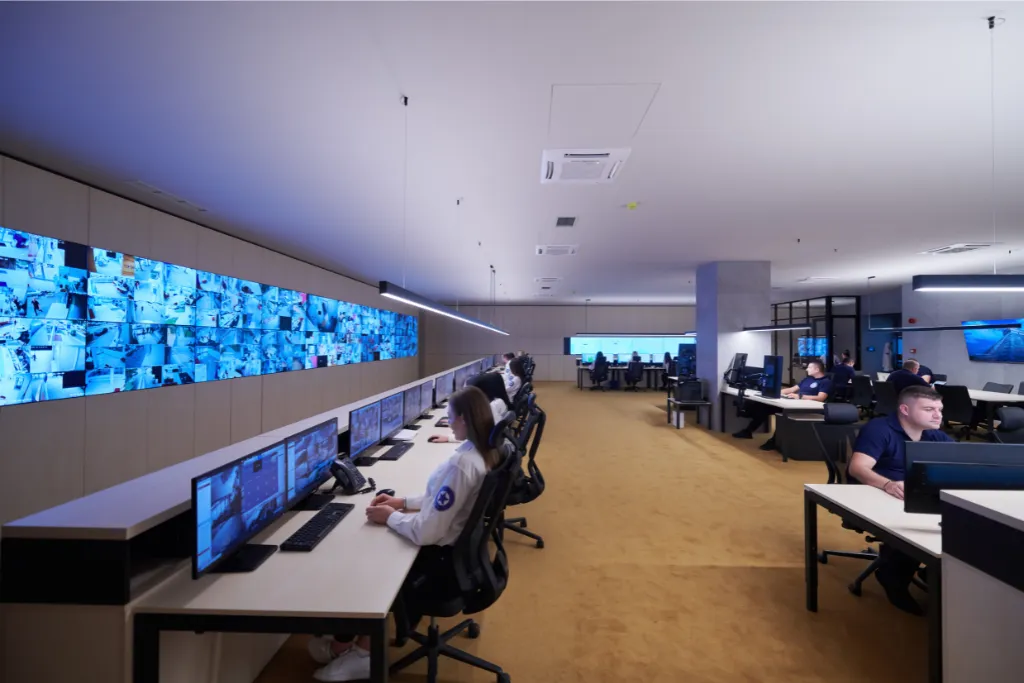As the world becomes more digitally connected, cyber threats are increasing at an alarming rate. Organizations of all sizes need to have a robust security operations center (SOC) in place to protect their data and assets. But what does an effective SOC look like in 2024? In this blog post, we will delve deeper into the key components of building an effective security operations strategy.
We will discuss the importance of cybersecurity, vulnerability management, and how automation and AI can improve detection and alerts. Additionally, we will explore the growing influence of orchestration and forensics in security operations while also peering into the future trends that lie beyond 2024.
Whether you’re a CISO or a security analyst looking to build your skill set, this blog post is a must-read for anyone who wants to stay ahead of emerging threats and build an effective SOC in 2024 and beyond.
- Understanding the Basics of Security Operations Center (SOC)
- Key Components of Effective Security Operations
- Unpacking the Term ‘SecOps’: A 2024 Perspective
- Harnessing Automation and AI in Security Operations
- The Growing Influence of Orchestration in Security Operations
- The Criticality of Forensics in Security Operations
- Future Trends of Security Operations: Looking Beyond 2024
- Conclusion
Understanding the Basics of Security Operations Center (SOC)

The Security Operations Center (SOC) serves as the nerve center of an organization’s security posture. It acts as a centralized hub, enabling proactive monitoring and response to cyber threats.
SOC teams leverage advanced security tools, such as Security Information and Event Management (SIEM) systems, to detect and respond to security events. These dedicated security professionals play a critical role in safeguarding an organization’s IT infrastructure and protecting its critical assets.
By employing best practices and leveraging threat intelligence, the SOC team can identify and mitigate emerging cybersecurity threats. Their responsibilities include monitoring telemetry data for suspicious activity, investigating potential incidents, and coordinating with incident responders and threat hunters to ensure a timely response.
With firewalls, preventative measures, and cutting-edge security solutions in place, the SOC helps organizations stay one step ahead of evolving cyber threats. The Chief Information Security Officer (CISO) plays a key role in overseeing the SOC’s operations and ensuring the organization’s security posture remains strong.
The Role and Importance of SOC in 2024
With the ever-changing threat landscape, the role of a Security Operations Center (SOC) has become increasingly crucial. SOC teams are responsible for detecting and responding to security incidents and collaborating with other departments to ensure a coordinated response. By doing so, they contribute to business continuity by minimizing the impact of security breaches.
In 2024, SOC will continue to be at the forefront of defending organizations against cyber threats. This is achieved through the utilization of advanced security solutions, best practices, and the expertise of security professionals. The SOC team monitors and analyzes telemetry data to identify suspicious activity, prevent malware infections, and mitigate cybersecurity threats.
Additionally, they work alongside incident responders and threat hunters to strengthen an organization’s security posture. The SOC’s efforts are complemented by firewalls, SIEM platforms, and other preventative measures designed to safeguard an organization’s IT infrastructure.
With a Chief Information Security Officer (CISO) leading the charge, the SOC plays a vital role in ensuring the resilience and integrity of an organization’s security operations.
Key Components of Effective Security Operations

When it comes to effective security operations, there are key components that play a crucial role. First and foremost, security operations require a combination of people, processes, and technology.
This includes having a skilled team of security professionals who can monitor and respond to threats in real time. Additionally, incident response is another crucial component. This involves promptly identifying and mitigating security incidents to minimize the impact on the organization.
Security automation and orchestration also enhance the efficiency of security operations by automating repetitive tasks and streamlining workflows. Integration of different security tools and platforms is essential for comprehensive threat detection, as it allows for better visibility and correlation of security events.
Lastly, continuous monitoring and analysis of security information are key to staying ahead of emerging threats and ensuring the organization’s security posture is strong.
The Crucial Role of Cybersecurity and Vulnerability Management
Cybersecurity and vulnerability management play fundamental roles in security operations. By identifying and patching vulnerabilities, organizations can prevent potential security breaches and protect their IT infrastructure from malware.
Timely vulnerability assessments and remediation are crucial in guarding against exploits and ensuring the organization’s security posture. Regular cybersecurity audits and risk assessments are essential for maintaining a strong defense against new threats.
Effective cybersecurity and vulnerability management reduce the organization’s exposure to cybersecurity threats and enhance the overall security posture.
Unpacking the Term ‘SecOps’: A 2024 Perspective
In the context of cybersecurity, the term “SecOps” refers to the integration of security and operations functions within an organization. It emphasizes collaboration and alignment between security and IT operations teams. As we look ahead to 2024, SecOps will be driven by automation, AI, and machine learning technologies.
These advancements enable proactive threat hunting and faster response to security incidents. The ultimate goal of SecOps is to enhance the overall security posture while ensuring business agility. By leveraging the power of automation and AI, organizations can stay one step ahead of cyber threats and safeguard their critical assets.
The Increasing Importance of Visibility in SecOps
Effective security operations heavily rely on visibility. This entails the constant monitoring of network traffic, endpoints, and user behavior. Enhanced visibility allows for the early detection of potential threats and anomalies, enabling security professionals to take prompt action.
Real-time monitoring and analysis provide valuable insights for proactive threat hunting, helping security teams stay one step ahead of cybercriminals. Moreover, improved visibility helps SOC analysts make informed decisions based on accurate and up-to-date information.
By incorporating telemetry from various sources, such as firewalls and servers, organizations can strengthen their security posture and proactively defend against cybersecurity threats. The increasing importance of visibility in SecOps cannot be overstated, as it plays a critical role in ensuring the overall security of an organization’s IT infrastructure.
Harnessing Automation and AI in Security Operations

Automation and AI technologies have revolutionized security operations, transforming the way organizations protect their digital assets. By leveraging these technologies, security teams can streamline incident triage and remediation through automated detection and response.
AI-powered analytics enable faster and more accurate threat detection, empowering security professionals to stay one step ahead of cyber threats. Moreover, security automation frees up valuable resources, allowing team members to focus on more strategic security tasks.
With the integration of automation and AI into security operations, organizations can enhance their information security and strengthen their overall security posture.
How can Automation Improve Detection and Alerts in SecOps?
Automation plays a crucial role in enhancing the detection and alerting capabilities of Security Operations (SecOps). By simplifying the process, reducing manual effort, and enabling intelligent correlation of security events, automation helps identify potential threats faster and distinguish between real threats and false positives. This allows SOC analysts to focus on high-value tasks, improving overall efficiency.
The Growing Influence of Orchestration in Security Operations
Orchestration plays a vital role in coordinating security operations activities, streamlining incident response workflows, and fostering better collaboration across teams. By integrating different security tools and platforms, orchestration ensures seamless operations within the security operations center (SOC).
Automated orchestration not only enhances the speed and accuracy of incident resolution but also enables security professionals to handle new threats efficiently.
In 2024 and beyond, orchestration will continue to be a key driver for efficient security operations, empowering organizations to enhance their information security and strengthen their overall security posture.
The Interplay between Analytics, Metrics, and SecOps Success
Analytics and metrics play a crucial role in measuring and improving security operations. By analyzing data, organizations can identify areas for optimization and enhancement in their security posture.
Key performance indicators (KPIs) enable tracking the effectiveness of security operations, while data-driven analysis facilitates evidence-based decision-making. This interplay between analytics, metrics, and SecOps empowers organizations to make informed choices and improve their overall security strategies.
It helps security professionals understand the organization’s security posture, detect suspicious activity, respond to cybersecurity threats, and take preventive measures to safeguard their IT infrastructure. With the right analytics and metrics in place, organizations can stay one step ahead of new threats and consistently enhance their security operations.
The Criticality of Forensics in Security Operations

Forensic analysis plays a crucial role in security operations. It helps uncover evidence of cyber attacks and identifies the root cause behind them. Digital forensics aids in the reconstruction of events and timelines during a security incident, providing valuable insights into attacker tactics, techniques, and procedures (TTPs).
By leveraging forensic techniques, security professionals can identify compromised systems or data breaches, allowing for timely response and remediation.
Additionally, effective forensic investigations support legal and regulatory compliance efforts, enhancing an organization’s security posture. Incorporating best practices in digital forensics is essential to stay ahead of new threats and ensure comprehensive incident response.
Is Forensics the Key to Thorough Incident Response and Investigation?
Forensic analysis plays a crucial role in incident response, determining the attack’s extent. It helps attribute security incidents to threat actors and enables evidence collection and preservation for thorough investigations. Adopting a forensic mindset enhances response capabilities and strengthens defenses while integrating forensics into workflows improves investigation efficiency.
Future Trends of Security Operations: Looking Beyond 2024
The future of security operations is shaped by various emerging trends. The increased adoption of automation and artificial intelligence (AI) is revolutionizing security operations. Proactive monitoring, employing threat intelligence, has become a standard practice.
Security teams are leveraging machine learning to detect and respond to emerging cyber threats swiftly. Furthermore, the embracing of orchestration helps streamline processes and enhance collaboration within the security operations team.
The convergence of IT operations and security operations drives improved visibility and agility, paving the way for a more robust security posture in organizations.
The Role of Continuous Improvement and Adaptation in SecOps
Continuous improvement fosters maturity and resilience within security operations. Adapting to ever-evolving threat landscapes is vital for effectively mitigating cyber risks. Regular evaluation and optimization of security tools and technologies enhance defense capabilities, bolstering an organization’s security posture.
Embracing a proactive approach enables threat hunting and detection, empowering security professionals to stay one step ahead of new threats. Prioritizing ongoing training and upskilling equips the security operations team with the necessary skills to keep pace with emerging cybersecurity threats.
Conclusion
In conclusion, building effective security operations in 2024 requires a comprehensive understanding of the basics of a Security Operations Center (SOC). With the increasing importance of cybersecurity and vulnerability management, it is crucial to prioritize visibility and harness automation and AI to improve detection and alerts.
Orchestration plays a vital role in optimizing the interplay between analytics, metrics, and SecOps success. Additionally, forensics is critical for thorough incident response and investigation. Looking beyond 2024, continuous improvement and adaptation will be key to staying ahead of evolving threats.
By implementing these strategies, organizations can strengthen their security posture and protect against emerging risks. Stay proactive and ensure that your security operations are equipped to handle the challenges of the future.







